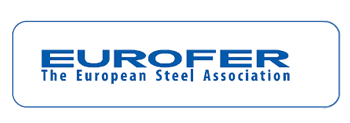
Speaking at the event, Geert Van Poelvoorde, President of EUROFER, said “Today, our steel industry in Europe is at a critical juncture, facing a number of roads we could go down. At this moment in time, it’s not clear in which direction we will go, because we are facing a complexity of geopolitical, economic and environmental challenges”.
European Steel Day 2019 brings together the steel industry, policy makers and stakeholders to discuss the key issues facing the European steel sector. Top of the agenda this year is slowing demand for steel in 2019, booming imports, and the need for carbon emissions reduction to be recognised by the EU as a global challenge, not one that unfairly burdens European steelmakers.
“These challenges have the potential to erase the whole steel industry in Europe. On the other hand, these challenges bring us a great opportunity, if we can embrace change and use it to accelerate innovation”, added Mr Van Poelvoorde.
“In 2018, there was a record 12% rise in European imports of finished steel products, in a market that grew only 3.3%” indicated Mr Van Poelvoorde. “We are grateful that the European Commission recognised the problem and took action. However, the safeguard has failed in its objective for a large part of our industry.”
EUROFER believes that the safeguard must work to impede the unfair imports that are distorting the EU market. These imports are risking the survival of domestic producers. A dynamic sector emerging from a year of growth on its domestic market is being forced to cut jobs and production. 330,000 people are employed directly by Europe’s steel industry.
Moving to decarbonisation, the President said, “For steelmakers, there are several possible routes to decarbonisation – and various pathways to achieve this are being tested by a range of steel companies. However, funding for these projects has to come from many different sources: to achieve decarbonisation, Europe’s steel sector cannot go it alone, it needs massive investments and cooperation with other stakeholders”.
There is a clear link between the costs of emissions compliance, such as the EU ETS, the costs of innovation and the intensity of import pressure.
“Assuming a plant emits 1.8 tonnes of CO2 per tonne steel produced and the CO2 price is €25, the additional marginal cost of every tonne of steel for which companies have to buy CO2 allowances is €45. This is a cost constraint that non-EU producers do not face”, explained Mr Van Poelvoorde.
These relatively small price differences can have a significant impact on open market competitiveness when faced with volume from other players that do not face the same costs.
“This dynamic is not recognised today in the EU”, emphasised Mr Van Poelvoorde. “Let me be explicit: there is a future for steel in Europe – but only if we have the momentum and knowledge to become a continent of successful low-carbon steelmakers. Only then will global industry follow our lead, reducing CO2 emissions globally”.
Mr Van Poelvoorde was speaking to 300 guests at European Steel Day 2019, from across the sector and stakeholders related to it.
European Steel Day 2019: Transitioning to the future of EU industry
European Steel Day 2019 is taking place on Wednesday, 26 June 2019 at the Concert Noble in Brussels.
European Steel Day 2019: Transitioning to the future of EU industry will examine the many changes taking place in the EU and the world today – for instance, in environment and trade policy – and how these changes will affect not just the European steel industry, but also sectors related to it. It will look at how policy makers and business leaders intend to continue the transition to a cleaner, more circular EU economy in the coming years.
For more information, please visit www.europeansteelday.eu
EUROFER Manifesto – Steel 2019-2024
This manifesto sets out the footprint and importance of European steel to the EU economy, and explains why we need to make the industry more innovative, skilled and sustainable while also ensuring there is a robust trade policy that defends the sector against the challenges posed by overcapacity and trade surges. The manifesto can be downloaded: here
New infographic explains EU steel safeguard
The EU put in place a safeguard in the wake of the US’ decision to impose a 25% tariff on all steel product imports into the US. This action, when seen in the context of massive global steel production overcapacity, risked causing massive deflection of steel volumes to the EU market, which an open market. Imports surged in 2018, rising by 12%. This infographic explains how the safeguard works and identifies some of the problems with it. The images are below and a PDF version can be downloaded: here
About the European Steel Association (EUROFER)
EUROFER AISBL is located in Brussels and was founded in 1976. It represents the entirety of steel production in the European Union. EUROFER members are steel companies and national steel federations throughout the EU. The major steel companies and national steel federations in Switzerland and Turkey are associate members.
About the European steel industry
The European steel industry is a world leader in innovation and environmental sustainability. It has a turnover of around €170 billion and directly employs 330,000 highly-skilled people, producing on average 160 million tonnes of steel per year. More than 500 steel production sites across 22 EU Member States provide direct and indirect employment to millions more European citizens. Closely integrated with Europe’s manufacturing and construction industries, steel is the backbone for development, growth and employment in Europe. Steel is the most versatile industrial material in the world. The thousands of different grades and types of steel developed by the industry make the modern world possible. Steel is 100% recyclable and therefore is a fundamental part of the circular economy. As a basic engineering material, steel is also an essential factor in the development and deployment of innovative, CO2-mitigating technologies, improving resource efficiency and fostering sustainable development in Europe.
